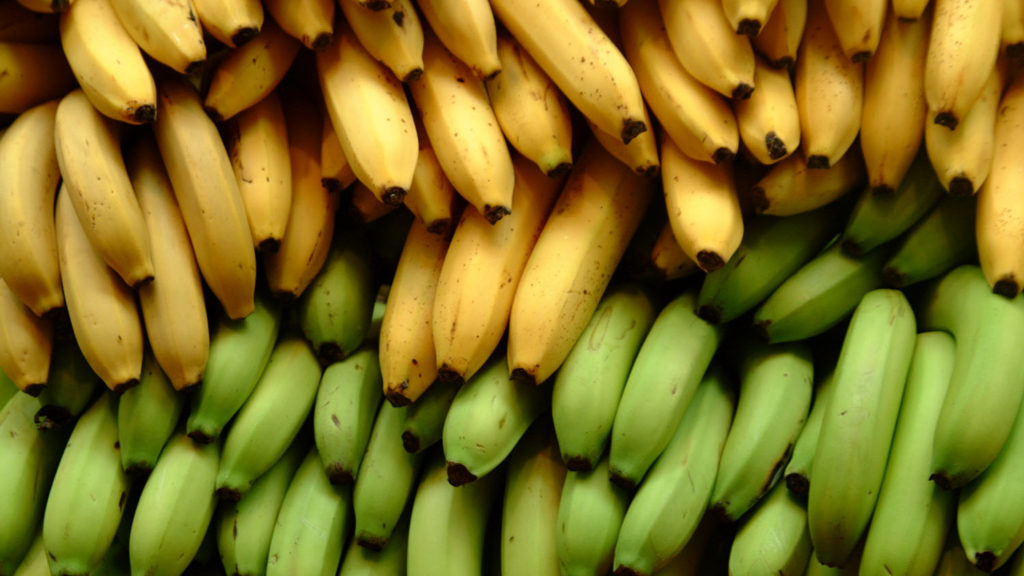In the produce aisle, things are in a perpetual state of flux. As the seasons wax and wane, and as cold or rainy weather afflicts different growing areas, the availability, quality, and price of different fruits and vegetables fluctuates weekly and sometimes daily. One constant in this ever changing tableau is the banana.
Bananas are a non-seasonal crop grown in tropical climates so they are available fresh year round. They are the most widely cultivated fruit crop in the world, grown in over 130 countries world-wide. In almost any populated area you visit in the tropics, you will see bananas for sale, usually at bargain prices. When I was in Ghana a couple years ago, you could buy a good-sized bunch of baby bananas for around 10 cents.
There is a good reason bananas are the most popular fruit in the world. They are in many respects a perfect food. We all know that bananas are a great source of potassium, but they also contain significant amounts of magnesium, fiber, Vitamin C and several of the B complex vitamins. They are luscious and filling. And they come wrapped in their own neat little package, which can be easily removed by hand.
Commercially grown bananas are picked green, and then shipped to market. Most bananas are artificially ripened in special ripening rooms where they are sprayed with ethylene gas. Even organic bananas get this treatment, although generally they are sprayed less because they do not sell as fast as conventional bananas. Ethylene gas is naturally given off by ripe fruit, a fact you can use to advantage if you ever want to ripen green bananas. Put the green bananas in a closed plastic bag with a piece of ripe fruit (a banana or tomato work well) and they will ripen in no time.
One thing I have noticed over the years is that people have clear preferences about how ripe they like their bananas. Some folks like theirs on the green side. They turn up their noses if there is so much as a single brown spot on a banana. Others prefer them riper. For these people, a few brown spots indicate that the starches in the banana have turned to simple sugars, making the fruit sweeter and all the more delectable. I would count myself among this later school. When choosing bananas, I also prefer organic fruit. It just tastes better to me. You can say I am biased, but apparently I am not alone in this preference. Other primates agree, according to a recent report from the Copenhagen Zoo. The zoo instituted a program recently to begin feeding its animals more organic foods, including bananas. According to zoo-keeper Niels Melchiorsen: “The chimpanzees are able to tell the difference between the organic and regular fruit. If we give them organic and traditional bananas, they systematically choose the organic bananas, which they eat with the skin on. But they peel the traditional bananas before eating them.” I still recommend peeling your organic bananas before you eat them. It is also a good idea to peel them before you freeze them if you are going to use them for smoothies, as you do in the following recipe:
Banana-Berry Smoothie
1 cup unfiltered apple juice or pineapple juice
1 cup vanilla yogurt
1 cup frozen berries, slightly thawed
2 ripe medium size bananas, peeled
2 tablespoons flaxseed oilCombine juice, yogurt, berries, bananas and flax oil in a blender container. Cover and blend until smooth. You can use frozen or fresh bananas. Frozen bananas will result in a thicker smoothie. This is a great way to use bananas that are on the verge of over-ripe. Just peel them, break them in pieces, and put them in a zip lock bag in the freezer, ready for future smoothies. If you’d like, add a scoop or two of your favorite protein powder to boost the protein content. Serves 4.


